Frost Free Refrigerator Problems and Solutions
A frost-free refrigerator is a type of refrigeration system that prevents the build-up of ice and frost inside the unit. It operates by continuously circulating air to prevent the accumulation of moisture and ensuring the interior of the refrigerator remains at a consistent temperature.
The importance of a frost-free refrigerator lies in its ability to maintain the quality of stored food by preventing freezer burn and spoilage. Despite its benefits, frost-free refrigerators are prone to several common problems such as door seal issues, ice build-up, fan problems, food quality compromise, power outages, temperature control problems, and noisy operation.
This overview will provide a comprehensive guide to the most common problems faced by frost-free refrigerators, their causes, symptoms, and possible solutions.
You'll Learn About
Frost Free Refrigerator Problems
Frost-free refrigerators can sometimes experience problems. One common issue is that the door seals may not be tight, allowing warm air to enter the unit and cause frost to form. To resolve this, inspect both the freezer and refrigerator door seals carefully and ensure that they are compressed and making full contact with the sides of the unit.
Another potential problem is a build-up of ice due to leaving the door open for too long or overloading the fridge. To resolve this, be careful to not leave the doors open for extended periods and make sure to keep the unit at a reasonable capacity.
Additionally, frost can form around the fan, causing it to slow down or stop completely. To fix this, unplug the appliance and remove any food, then defrost the fan. In some cases, frost-free freezers could compromise the long-term quality of food stored in them.
This is because frost is moisture that was once floating around in the freezer, and it could affect the quality of the food over time.
Door Seal Problems
A door seal is a crucial component of a frost-free refrigerator that helps to maintain the desired temperature inside the unit and prevent the entry of warm air from outside. Door seals can become damaged over time, resulting in the formation of gaps that allow warm air to enter the refrigerator, causing it to lose its efficiency.
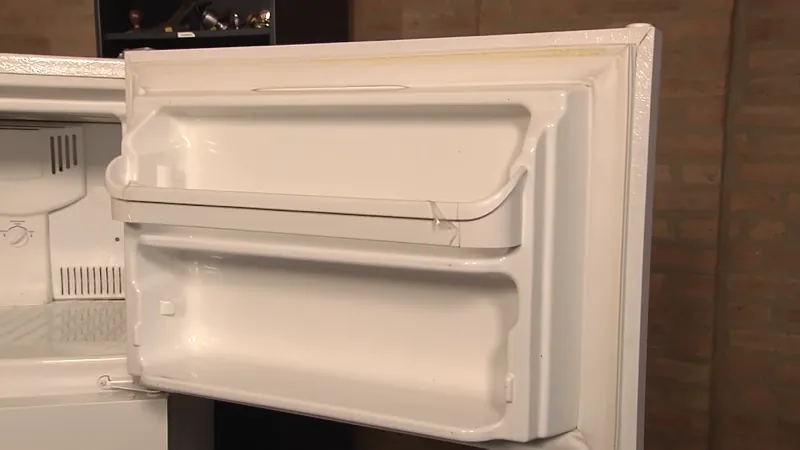
Causes of Door Seal Problems
There are several causes of door seal problems, including:
- Wear and Tear: Over time, the door seal may become brittle and crack, leading to gaps that allow warm air to enter the refrigerator.
- Food or Liquid Spills: Spills of food or liquids on the door seal can cause it to become sticky or discolored, leading to gaps in the seal.
- Poor Maintenance: Neglecting to clean the door seal regularly can result in the accumulation of dirt, food particles, or other debris, causing gaps in the seal.
Symptoms of Door Seal Problems
The following are common symptoms of door seal problems:
- Increased Energy Bills: A damaged door seal can cause the refrigerator to work harder to maintain the desired temperature, leading to increased energy bills.
- Uneven Temperature Distribution: If the door seal is damaged, warm air can enter the refrigerator, leading to uneven temperature distribution.
- Frost Build-Up: A damaged door seal can cause frost to build up inside the freezer compartment, affecting the efficiency of the refrigerator.
Solutions to Door Seal Problems
The following are possible solutions to door seal problems:
- Replacing the Door Seal: If the door seal is damaged, it should be replaced with a new one to prevent the entry of warm air into the refrigerator.
- Cleaning the Door Seal: Cleaning the door seal regularly with a damp cloth can prevent the accumulation of dirt, food particles, or other debris, maintaining its efficiency.
Checking the Alignment of the Doors
If the door seal is not compressed and making full contact with the sides of the refrigerator, it may be due to the misalignment of the doors. The doors should be adjusted to ensure that the seal is making full contact with the sides of the refrigerator.
Door seal problems are a common issue faced by frost-free refrigerators, and it is crucial to address them promptly to maintain the efficiency of the refrigerator and prevent food spoilage. By recognizing the causes, symptoms, and solutions to door seal problems, you can keep your frost-free refrigerator functioning optimally for years to come.
Build-up of Ice
A frost-free refrigerator is designed to prevent ice build-up and maintain an optimal temperature for preserving food. However, this doesn’t mean that ice build-up won’t occur in a frost-free refrigerator. Here are the causes, symptoms, and solutions for this problem.
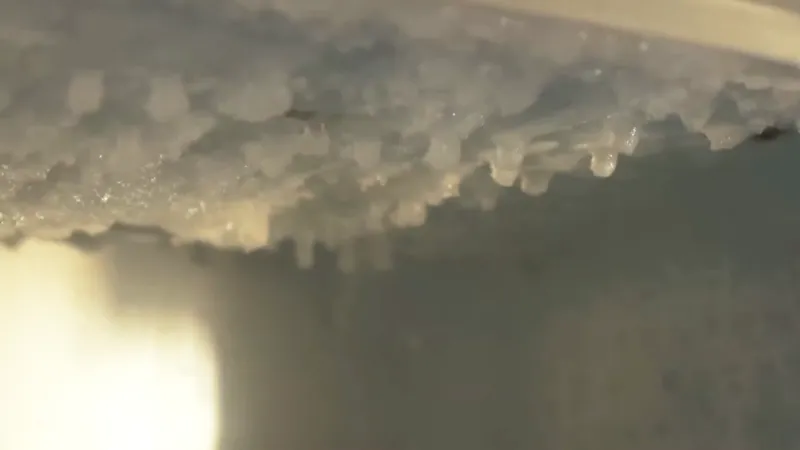
Causes of Ice Build-up
- Door left open for too long: If you leave the door of your frost-free refrigerator open for an extended period, warm air from the room will enter the refrigerator, causing the ice to melt and then refreeze when the door is closed.
- Overloading the fridge: If you stuff too much food into your frost-free refrigerator, it can block the air vents and cause ice build-up.
- Broken fan or faulty defrost system: If the fan that circulates air in the refrigerator or the defrost system that helps prevent ice build-up is not functioning properly, it can lead to ice build-up in your refrigerator.
Symptoms of Ice Build-up
- Decreased cooling efficiency: If your frost-free refrigerator is not cooling effectively, it could be a sign of ice build-up.
- Excessive frost or ice on the walls or shelves: If you see a significant amount of frost or ice in the interior of your refrigerator, it’s an indication that ice build-up is occurring.
- Poor air circulation: Poor air circulation can cause the temperature in your frost-free refrigerator to become uneven, leading to ice build-up.
Solutions to Ice Build-up
- Avoid overloading the fridge: Make sure to leave enough space between the food items so that air can circulate freely in the refrigerator.
- Keep the door closed: Make sure to close the door of your frost-free refrigerator promptly to prevent warm air from entering.
- Clean the air vents: If the air vents in your frost-free refrigerator are clogged, clean them to ensure proper air circulation.
- Call a professional: If the fan or the defrost system in your frost-free refrigerator is broken, it’s best to call a professional to fix the problem.
preventing ice build-up in a frost-free refrigerator requires proper usage, routine maintenance, and prompt repairs. If you experience any symptoms of ice build-up, take action promptly to prevent it from affecting the quality of your food and the performance of your refrigerator.
Fan Problems
A frost-free refrigerator operates with a fan to circulate the cold air from the freezer compartment to the fresh food section of the refrigerator. A malfunctioning fan can cause a range of problems in the frost-free refrigerator, and it’s important to address these issues as soon as possible.
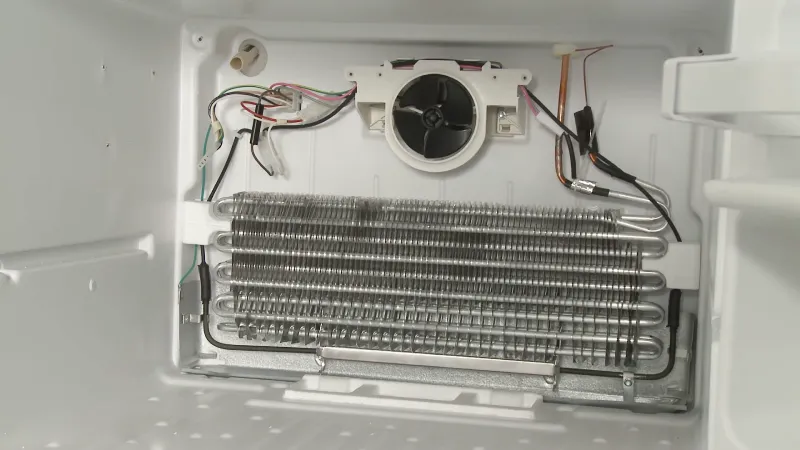
Causes of Fan Problems
- Dirty fan: The fan can become clogged with dirt and debris, reducing its efficiency and effectiveness.
- Malfunctioning fan motor: The fan motor can break down due to excessive usage, leading to a failure of the fan.
- Power supply issues: If the fan is not receiving enough power, it may not function properly.
Symptoms of Fan Problems
- Uneven temperature distribution: The fan circulates the cold air, so if it’s not functioning, the temperature distribution can become uneven in the refrigerator and freezer.
- Excessive frost: If the fan is not blowing the air around the freezer compartment, the temperature will drop and cause excessive frost build-up.
- Noisy fan: If the fan is making excessive noise, it could indicate a problem with the fan motor.
Solutions to Fan Problems
- Clean the fan: Clean the fan blades with a soft cloth to remove any dirt and debris.
- Replace the fan motor: If the fan motor is damaged, it will need to be replaced to resolve the problem.
- Check the power supply: Make sure the refrigerator is receiving enough power, and check the power cord for any signs of damage.
fan problems in a frost-free refrigerator can have a significant impact on its performance, and it’s important to address these issues as soon as possible to maintain its efficiency. By checking for the symptoms and causes, and taking the appropriate action, you can ensure your frost-free refrigerator operates effectively.
Quality of Food Compromised
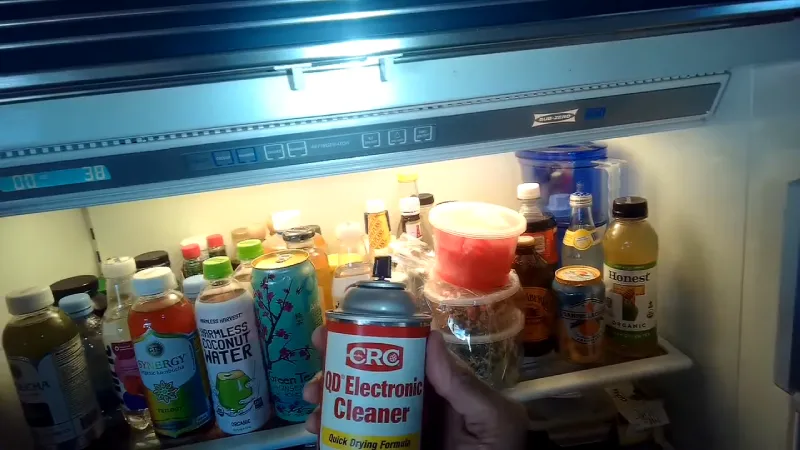
Causes of Food Quality Compromise
Frost-free refrigerators are designed to circulate air to prevent the formation of frost and ice. However, this can sometimes result in fluctuating temperatures that can compromise the quality of food stored inside the refrigerator. Other causes of food quality compromise include a malfunctioning thermostat, clogged air vents, or a failure of the defrost system.
Symptoms of Food Quality Compromise
One of the most common symptoms of food quality compromise is the spoilage of food stored in the refrigerator. Food may develop an off taste, off smell, or become discolored. Additionally, if the temperature inside the refrigerator is not consistent, food may freeze or become too warm, which can result in spoilage.
Solutions to Food Quality Compromise
If you are experiencing issues with the quality of food stored in your frost-free refrigerator, it is important to address the issue as soon as possible. Start by checking the thermostat and making sure that it is set to the correct temperature.
Clean the air vents to ensure that air can circulate freely. If the issue persists, you may need to have the defrost system checked by a professional. Additionally, it may be necessary to regularly organize and rearrange food in the refrigerator to ensure that air can circulate freely and temperatures remain consistent.
Power Outage and Food Spoilage
Causes of Power Outages
Power outages can occur due to several reasons such as electrical grid failures, natural disasters, equipment malfunctions, and more. They can last anywhere from a few minutes to several hours and even days.
Symptoms of Food Spoilage
During a power outage, the temperature inside the refrigerator may rise, causing the food to spoil. Some signs of food spoilage include:
- Bad odor
- Discoloration of the food
- Slimy texture of the food
- Off-taste or sour taste
Solutions to Food Spoilage
Keep the Refrigerator Door Closed
To prevent food spoilage during a power outage, try to keep the refrigerator door closed as much as possible. The more you open the door, the more heat will enter the refrigerator and the more quickly the food will spoil.
Use a Thermometer
A thermometer can help you monitor the temperature inside the refrigerator. If the temperature rises above 40°F, the food may start to spoil, so it’s best to use it within a couple of hours.
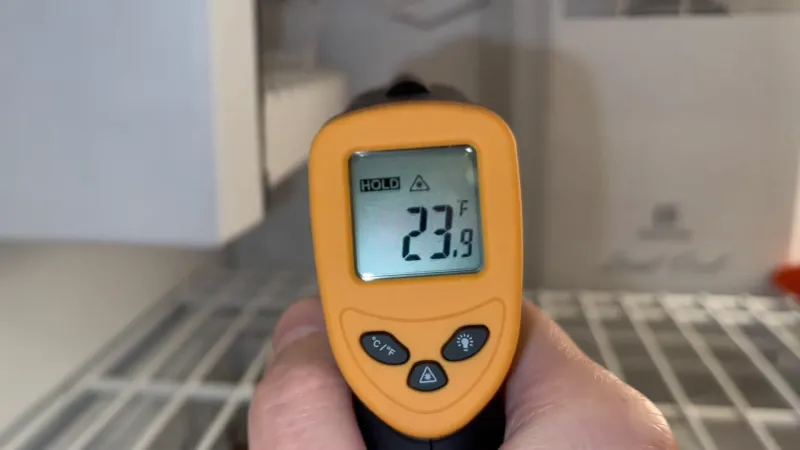
Move food to an alternative refrigeration source
If the power outage is expected to last for several hours or even days, it’s best to move food to an alternative refrigeration source, such as a cooler filled with ice or a neighbor’s working refrigerator.
Discard food that has been spoiled
If food has been spoiled due to a power outage, it’s best to discard it immediately to avoid food poisoning.
power outages and food spoilage can be a major concern for frost-free refrigerators. To prevent food spoilage during a power outage, it’s important to keep the refrigerator door closed, monitor the temperature inside the refrigerator, move food to an alternative refrigeration source, and discard food that has been spoiled.
Temperature Control Problems
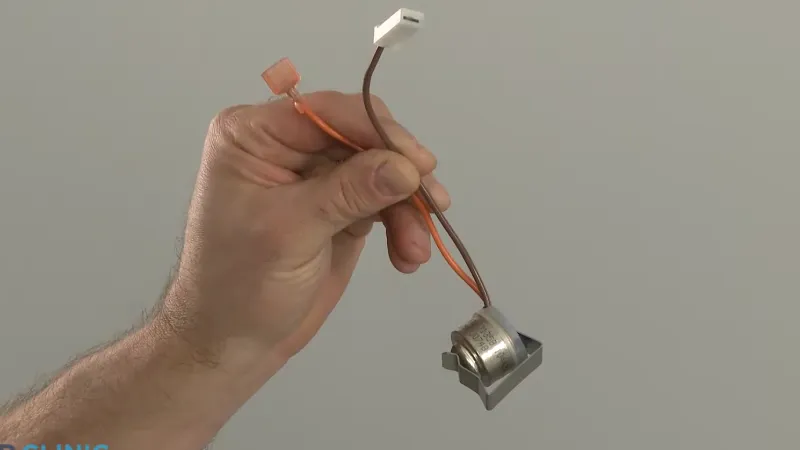
Causes of Temperature Control Problems
Temperature control problems in a frost-free refrigerator can be caused by several factors, including a malfunctioning thermostat, a faulty temperature control system, a clogged or dirty condenser coil, or an issue with the cooling system. Other causes may include incorrect settings or misalignment of the door, poor insulation, or an overstocked refrigerator.
Symptoms of Temperature Control Problems
If you’re experiencing temperature control problems with your frost-free refrigerator, you may notice that your food is not being kept at the right temperature, causing it to spoil more quickly. You may also notice that the refrigerator is running constantly, making unusual noises, or that ice is forming inside the refrigerator.
Solutions to Temperature Control Problems
To solve temperature control problems, you should first check the thermostat settings and ensure that the door is closing properly. If the problem persists, you may need to clean or replace the condenser coil or have a technician inspect the cooling system.
You can also reduce the load on the refrigerator by clearing out some items and rearranging the shelves. In some cases, a simple adjustment to the temperature settings may solve the problem. If the issue is persistent, it may be necessary to replace the refrigerator.
Noisy Operation
Frost-free refrigerators can become noisy due to various reasons such as worn-out fan blades, worn-out motor bearings, and clogged condenser coils. A dirty condenser can cause the fan to work harder than it should, leading to increased noise levels.
In addition, the accumulation of dirt and dust can also cause the fan blades to make a rubbing sound.
Symptoms of Noisy Operation
The symptoms of noisy operation include loud buzzing or humming sounds coming from the refrigerator, especially when the fan is running. You may also hear a high-pitched squealing or grinding sound if the fan blades are damaged or worn-out.
Solutions to Noisy Operation
If you hear a loud buzzing or humming noise, you should unplug the refrigerator and clean the condenser coils using a vacuum cleaner or a condenser cleaning brush. If the noise persists, you may need to replace the fan motor or the fan blades.
If you hear a squealing or grinding noise, you should unplug the refrigerator and inspect the fan blades for any signs of damage. If the blades are damaged, you may need to replace them. If the motor bearings are worn-out, you may need to replace the entire fan assembly.
It is important to seek the help of a professional repair technician if you are unsure how to fix the noisy operation.
Conclusion
Frost-free refrigerators are an essential household appliance, but they can be prone to several problems. From door seal problems, ice build-up, fan issues, food quality compromise, power outages, temperature control problems, and noisy operation, these problems can lead to reduced efficiency and even food spoilage.
It’s important to be aware of these common issues and take preventive measures like regular maintenance to avoid them. If the problems persist, it’s best to seek professional help. Regular maintenance, prompt action, and seeking expert help can ensure that your frost-free refrigerator continues to function optimally, preserving the quality and freshness of your food.


